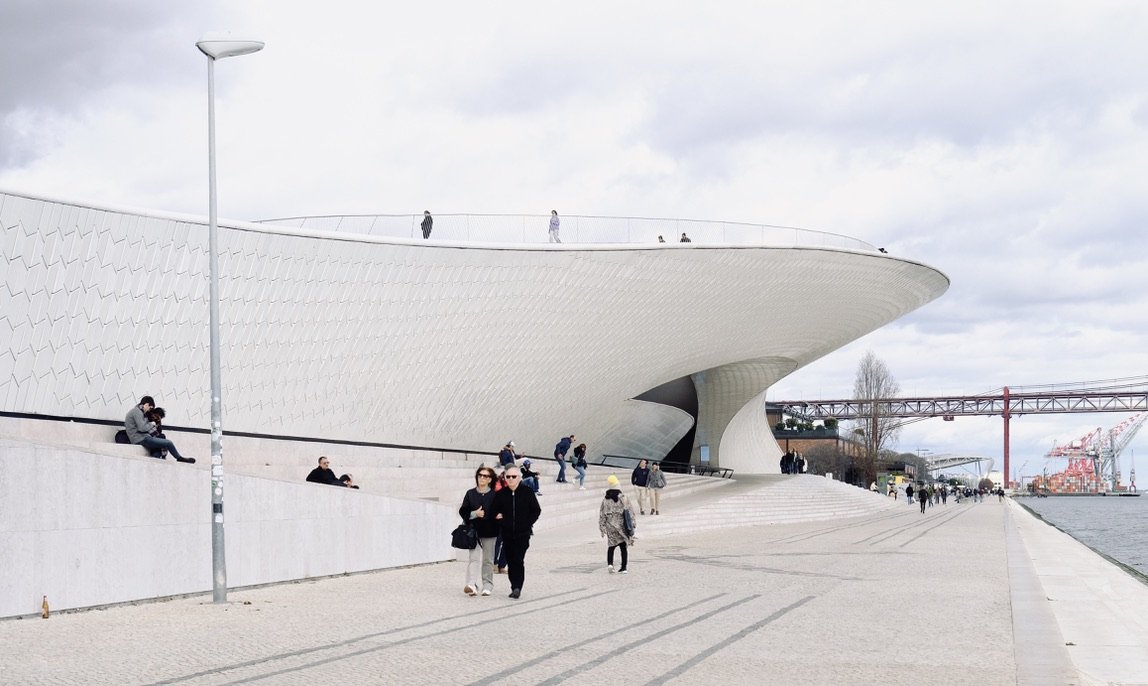The Time is Now: Why Delaying Today Will Cost You Tomorrow
Art, gallery
MAAT Museum
In Lisbon's historic district of Belém, overlooking the riverfront, the Museum of Art, Architecture and Technology (MAAT), designed by AL-A/ Amanda Levete Architects is currently hosting an exhibition that takes visitors on a fascinating journey through the 30 year career of Didier Fiúza Faustino, a celebrated artist, architect and designer. The retrospective, titled "EXIST/RESIST," is a unique opportunity to explore the creative mind of Faustino and discover his artistic vision, inspirations and influences.
The exhibition is a celebration of Faustino's diverse and innovative body of work, showcasing a wide range of his projects, from, photos, audiovisuals, models and prototypes to large-scale installations and drawings. Visitors to the MAAT can experience the power and beauty of Faustino's work in the context of one of Lisbon's most iconic and impressive cultural institutions.
Too Late for Tomorrow
Didier delves through his statement (i.e Too late for tomorrow) into the urgent need for immediate action and explore the consequences of further delay. It's time to face the hard truths and embrace bold solutions, because the clock is ticking and we can't afford to wait any longer.
As the world barrels towards an uncertain future, we find ourselves at a critical juncture where the actions we take today will determine the fate of tomorrow. But what happens when tomorrow has already arrived and we are still struggling to keep up? This is the reality we face as a society and it's time to confront the uncomfortable truth that it may already be too late for tomorrow.
red neon flashes on “Too late for tomorrow” - Installation
I’d like to think that artist’s statement suggests that our minds have immense power and potential for growth and development. Anything that hinders or obstructs the functioning of the mind, such as negative thoughts, limiting beliefs, fear, anxiety, distractions or addiction, can prevent us from evolving and reaching our full potential.
Didier's show is a testament to the artist's creativity and ingenuity. The exhibit features a collection of both past and newly created works, which are seamlessly woven together in a stunning display of artistry. The show's scenography is masterfully designed by Faustino's studio, Mésarchitecture, and adds an additional layer of depth and complexity to the already visually stunning exhibit.
The exhibition's concept is based on the idea of creating a dialogue between the two core areas of the museum, thereby creating two unique spatial experiences for the viewer. Artist’s work seamlessly blends the past and the present, creating a sense of continuity and progression that is both aesthetically pleasing and intellectually stimulating.
A Multi-Dimensional Experience in Art
The exhibition's scenography is designed to highlight the various themes and motifs present in Didier's work, such as the use of light and shadow, the interplay between space and form, and the exploration of color and texture. The result is a multi-dimensional experience that engages the viewer on multiple levels, from the visual to the intellectual.
Overall, Didier's show is a masterful display of artistic prowess and innovation. It is a testament to the artist's ability to seamlessly blend past and present, and to create a unique and immersive experience for the viewer. The exhibition is a must-see for anyone interested in contemporary art or design, and is sure to leave a lasting impression on all who experience it.


























A stark contrast between the public image of tradition and civic pride, and the reality of a city grappling with profound economic and social inequality.